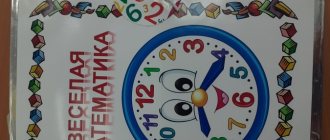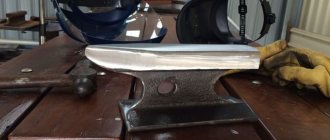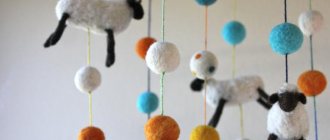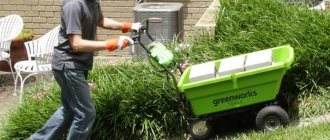If you don't want to spend money on something you can do yourself, then you're like me. One day I was in a store and saw pictures of these accessories. They consisted of a folding base covered with white fabric with a hole in the front wall. Photo boxes are used to capture subjects in a photo studio (like this chocolate reindeer).
I was going to buy a photo box until I saw the price of $100. Spending $100 on a few pieces of sheer fabric and a frame?! All this can be done much cheaper. So, I built my own similar light tent (that's what they are also called), and it turned out quite well.
Necessary materials
First of all, you need to decide what you plan to make a photo box for product photography from, what will be the basis, the frame. There are a lot of options here, depending on the photographer’s imagination. We offer the three most common options: wooden slats, plastic pipes, cardboard box. Below we will tell you how to make the frame of a future lightcube from these materials.
In addition to the frame materials, to create a photo box for product photography you will need:
- White, relatively transparent fabric;
- A sheet of thick paper, with a density of about 200 g/m2;
- The light source can be table lamps, or you can make them yourself, for which you need to purchase foil, an electrical cord, a switch, diode lamps, lamp sockets, a plug, and electrical tape.
If you have all the listed tools, making a lightcube for object photography with your own hands will take no more than one hour.
Homemade tripod for softbox
After selecting the light bulb, move on to the tripod. Most bloggers and users do not have a normal adjustable tripod. At the same time, I really want to get a softbox, specifically with the ability to change the height and angle of the reflector.
Everything is like the professionals.
What can help you in this matter? An old telescopic fishing rod comes to the rescue. Use her very first knee.
It is better to make a powerful, heavy base from a piece of chipboard. Cut out a circle or square and three triangles. They are needed as struts for the stability of the entire structure.
A cylindrical stick (for example, from a mop) or a thick plastic tube is placed in the center of such a platform.
Next, all these parts are connected to each other with wood screws.
A rod is inserted on top of this base. All that remains is to figure out how to connect the softbox itself to this tripod.
The cheapest and most suitable option is to select a metal-plastic tube and mounting clips of the required diameter. You should end up with something like this.
It can be rotated both up and down and left and right.
Two clips are coaxially attached or tightly glued to the outer wall of the softbox and, through an adapter tube and another clip, are mounted on a tripod. You won’t come up with anything simpler, but at the same time effective.
Step by step process
Let's look at the step-by-step process of making a photo box for product photography with your own hands.
Frame
Previously, we looked at three types of materials for creating a photo box body for product photography with your own hands. Let's look at how to create a frame from each type:
- Wooden slats. To ensure that the photo box does not turn out to be heavy, slats should be used with a thickness of about 10 by 5 mm. To fasten them, it is better to use “postal” nails 10 mm long. It is necessary to fasten the slats with nails to obtain a photo box with each side measuring 1 meter;
- Plastic pipes. Sold in plumbing stores. The plastic must be fastened together with special corners. To fix the pipes in the corners, their ends must be heated over the fire of a gas stove, but not to the point of melting. After warming up, you need to quickly connect the angle and pipe and keep them fixed for at least 30 seconds. Thus, we connect all the pipes and corners, we get a cube with the same side size of 1 meter;
- Box. The simplest, but not the worst way. Find a cardboard box that is close to a cubic meter in size. Using a stationery knife, cut out the sides of the box, leaving 3 cm from each side. You will get sides with “windows” through which light will pass through the fabric. There is no need to cut out the bottom of the box.
This is what three options for making a frame for a photo box for product photography with your own hands look like. Then we move on to the next step - upholstery with fabric.
Fabric walls
The fabric serves not just as walls, it is designed to diffuse light. It is diffused light that is the purpose of using a photobox for product photography. The ideal result of its use is the absence of any shadows from the subject.
We use a white sheet as fabric, the main thing is that it is not dense. We cut the pieces and attach the fabric to the frame with a slight tension; the fabric should not sag. In the case of a wooden case or box, you can use a construction stapler and attach the material with staples. When using a frame made of pipes, it is better to attach the fabric using double-sided tape from the inside and nails from the outside.
The fabric should be covered on all sides except the front. The front of the cube will be used for product photography, and you will work through it. Naturally, you shouldn’t touch the bottom either.
Light
Light is a very important component of a photobox for product photography. The more light used, the better. It is better to aim at three sources that will be located on top and on the sides. This arrangement will allow you to avoid shadows (if desired), and three sources will provide sufficient light flux so as not to use a tripod and not to increase the ISO. When working with a photobox, light sensitivity should not be set above the minimum, so as not to harm the quality, because the conditions allow it.
As we have already said, table lamps can be used as light for product photography. It is important to change the bulbs in them, it is better to use the same ones, so as not to have to worry about the white balance settings in the process. Low lamps are suitable on the sides; they need to be directed exactly at the wall, to illuminate the center of the cube. To direct light from above, it is convenient to use a lamp with a leg that is attached to the tabletop. As a rule, such lamps are tall and securely fixed; they can be easily directed to illuminate the photobox through the “ceiling”.
If you decide to make the light yourself, then it is not difficult. To fix the lamps, you will need an electrical rigid cable with a copper or aluminum core that can hold its shape. From this cable, make stands for cartridges, including on top. Connect all cartridges with soft cables connected to one plug. Install a “key” (switch) on each cable; for convenience, you can use the option that regulates the light flux. Make wide “balls” from cardboard that will be used as reflectors. Place foil on the inside of the bags. Attach the resulting structure to the cartridge. Thus, we get an imitation of table lamps for less money.
Choosing a light bulb for a softbox
The cartridge itself is connected via a power cord, with a separate switch on it. Similar ones are used for table lamps.
How to quickly and correctly connect the cartridge and not make mistakes, read in a separate article. It also has its own characteristics.
Choose LED light bulbs with a minimum heating temperature. The ideal option would be specimens with a color temperature of 5000 Kelvin.
But these are rare. Usually they go 4000K, 4500K or 6000K. Here, look at your circumstances and shooting conditions.
But never use warm yellow light. Otherwise, your face in photos and videos will resemble a person who has just woken up after a binge.
For such lamps, the color rendering index CRI is also important.
It should definitely be above 80. With a low CRI or Ra, you will not be able to achieve normal white balance. The skin color will turn green and look unnatural.
Colors in general can present surprises in the wrong light.
Making large lightboxes
Making large lightboxes yourself should only be done as a last resort: they have a frame design, it is more complicated, and therefore it is better to order them from professionals. However, if you still decide to do it yourself, there is one trick. As a back wall in a large light box (of course, a homemade one) you can use banner fabric, painted black on the outside and white on the inside. It is cheaper and lighter than galvanized sheet. Of course, lamps cannot be attached to it, but this is not necessary, because in large frame lightboxes everything is attached to the frame, and the rigidity of the structure is ensured by it.
Installing the backlight
To illuminate the box, LED strip or LED modules are used. With the advent of inexpensive compact strips of increased brightness, the use of LED modules has become economically unprofitable. To ensure uniform luminous illumination, the LED strip is mounted along the inner perimeter of the box in one or two rows. Also, LED backlighting is very convenient when making three-dimensional letters.
The inside of the box itself must be made of materials with a sufficiently high reflective coefficient. For these purposes, you can consider using white self-adhesive film or ordinary white glossy paint.
An illuminated advertising box is an excellent solution for creating bright, and most importantly, effective advertising. The right approach to promoting any business would be to use a lightbox design - an inexpensive and simple solution.
Assembly
Part 1
Basic steps to create one layer:
- Prepare 8 LEDs with cut cathode legs to 10 mm;
- Fill all the holes in the base with LEDs;
- Bend and solder the cathode legs;
- Bend and solder the anode legs;
- Solder the wires to the cathode legs and secure them.
This procedure must be repeated 8 times.
The assembly of one layer of the cube can be seen in the video:
Part 2
- Prepare 15 jumpers;
- Solder jumpers onto the printed circuit board;
- Solder the electronic components to the board;
- Solder a 5-pin right-angle connector for the first layer;
- Cut off the fifth anode contact;
- Insert and solder all anode legs to holes G, F, E, D, C, B, A and DP;
- Insert and solder cathode wires into holes D0, D1, D2, D3, D4, D5, D6 and D7;
- Cut the wires and legs from the back of the board.
The second part of the assembly in the video:











